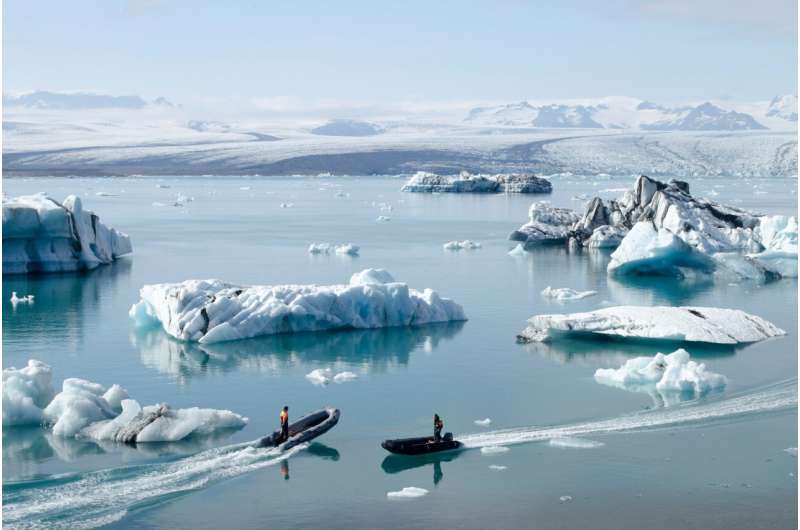Global warming is an omnipresent issue, with widespread initiatives to draw down emissions and mitigate against the International Panel on Climate Change's worse-case scenario predictions of 3.2°C of warming by 2100 (relative to pre-Industrial levels). Current measurements stand at 1.1°C of warming across Earth, but polar regions are experiencing enhanced surface warming compared to the rest of the planet.
Quantifying this amplification of warming in the Arctic (>65°N) compared to global means, and the mechanisms behind this, is the subject of new research published in Nature Geoscience.
Dr. Wenyu Zhou, of the Pacific Northwest National Laboratory, U.S., and colleagues investigated previous reports of Arctic amplification factors of two to four since 1979, and determined a factor of three to be more likely based upon Earth's natural variability modulating temperature change.
"Natural variability is like noise," Dr. Zhou explains. "Even in the absence of external forcing (such as changes in greenhouse gases), the state of the climate system can fluctuate due to its coupled dynamics of ocean, atmosphere and land. Such variability can occur at various timescales (interannual, decadal, multi-decadal) depending on the corresponding 'mode.'
"Thus, the observed Arctic amplification consists of two parts—the part that is forced by external forcing and the part due to natural variability (which leads to the temporal anomaly in the degree of Arctic amplification).
"The alarming fourfold Arctic amplification in recent decades challenges our previous beliefs and is rarely reproduced by climate models," Dr. Zhou says.
"It remains elusive whether this discrepancy reflects a temporary anomaly due to natural variability or a forced state of Arctic warming systematically underestimated by models."
To explore this, the research team compared observational data to model simulations, finding the difference in amplification factor between the two could be explained by natural variability, specifically certain ocean and climate patterns associated with the region. This includes the Interdecadal Pacific Oscillation and Arctic internal mode.
Modeling of Arctic warming amplification based upon factors of natural variability, such as surface temperature (a), geopotential height (b), moisture flux and longwave radiation (c) and sea ice concentration (d). Credit: Zhou et al. 2024.
The Interdecadal Pacific Oscillation is a 20- to 30-year pattern of climate and oceanographic change across both hemispheres of the Pacific Ocean where positive phases see warming to the east and cooling to the west, swapping during negative phases.
The negative phase is most important as it links to a higher frequency of La Niña events (trade winds push warm water towards Asia resulting in the upwelling of cool, nutrient-rich water along the American coastline, often increasing the severity of hurricane season here), and has been found to have had a reductive effect on Arctic warming since 2000.
Meanwhile, the Arctic internal mode is determined to have enhanced warming since 2005. This relates to positive phases resulting in warming over the Kara Sea, with anti-cyclonic climate patterns bringing moisture to the area that encourages longwave radiation to be absorbed and warm the surface, leading to melting of sea ice.
#fyp,#Highlighting,#Boosting,#Everyone,#EarthScience,#Nanotechnology,#Physics,#Astronomy,& #Space,#Chemistry,#Biology

Comments
Post a Comment